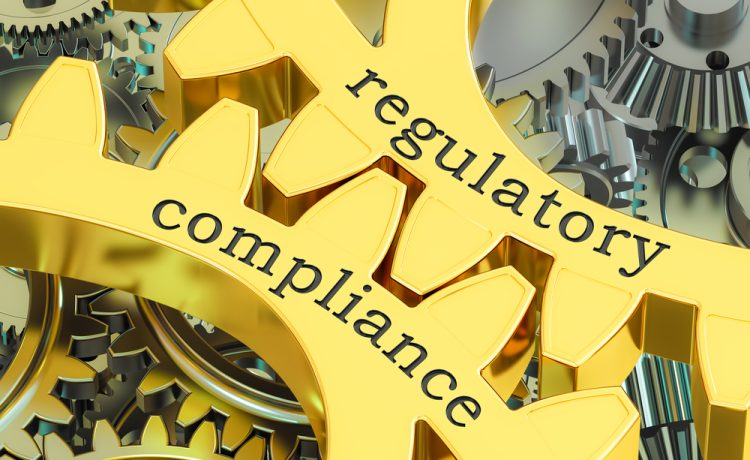In today’s rapidly evolving business landscape, regulatory compliance has become more than just a legal obligation—it’s a critical pillar for sustainable growth. For businesses aiming to scale responsibly while managing risks, understanding and adhering to regulatory requirements is key. Whether you’re launching a startup or managing an established enterprise, navigating the complexities of regulatory compliance can be overwhelming. However, when done right, it not only safeguards the company but also enhances its credibility, operational efficiency, and long-term success. In this article, we will explore the fundamentals of regulatory compliance, its importance for sustainable growth, and practical steps to ensure your business remains compliant in an ever-changing environment.
What is Regulatory Compliance?
At its core, regulatory compliance refers to a business’s adherence to laws, regulations, standards, and guidelines established by governing bodies. These regulations can pertain to a wide array of areas, such as financial reporting, data protection, environmental sustainability, and industry-specific requirements. Compliance ensures that businesses operate within legal boundaries and mitigate risks such as penalties, legal disputes, and reputational damage.
Regulatory frameworks vary across industries and countries, and failure to comply can result in serious consequences, including fines, business shutdowns, or lawsuits. In contrast, compliance can provide organizations with a competitive edge, positioning them as trustworthy entities in the eyes of customers, investors, and regulatory authorities.
The Link Between Compliance and Sustainable Growth
For any business, growth should be a well-planned, strategic endeavor. However, growth that is not aligned with regulatory frameworks can lead to instability and increased risk. Here’s why regulatory compliance is intrinsically linked to sustainable growth:
-
Risk Management: Non-compliance opens the door to legal and financial risks, which can hamper a business’s growth trajectory. A strong compliance program acts as a risk management tool, reducing the likelihood of disruptions that could affect long-term stability.
-
Credibility and Trust: Today’s consumers, investors, and stakeholders are highly concerned about ethical practices. A business that complies with industry standards and regulations builds trust, which is essential for customer retention, attracting investors, and forging strong partnerships.
-
Efficiency and Optimization: Regulatory requirements often demand streamlined processes and best practices. By aligning your operations with these standards, you not only avoid penalties but can also improve internal efficiencies, ultimately driving more sustainable growth.
-
Reputation Protection: Companies that consistently adhere to regulations are less likely to face public scrutiny or brand damage. In the long run, protecting your reputation is an essential component of fostering sustainable growth.
-
Access to Markets and Funding: Regulatory compliance can open doors to new markets and funding opportunities. Many investors and financial institutions require evidence of compliance as a prerequisite for investment. Additionally, international businesses often need to adhere to specific regulations in order to enter foreign markets.
Key Areas of Regulatory Compliance
Understanding the different aspects of regulatory compliance is crucial for managing the legal framework of your business. Below are some of the key areas you should focus on:
-
Financial Compliance: This includes adhering to financial reporting standards, tax laws, and accounting regulations. Companies must follow industry-standard frameworks such as the International Financial Reporting Standards (IFRS) or Generally Accepted Accounting Principles (GAAP), which ensure that financial statements are accurate and transparent.
-
Data Protection and Privacy: With the rise of digital transformation, data protection has become a focal point of regulatory compliance. The European Union’s General Data Protection Regulation (GDPR) is one of the most stringent privacy laws, but other regions have their own requirements, such as California’s Consumer Privacy Act (CCPA). Businesses must ensure that they are safeguarding customer data and respecting privacy rights.
-
Health and Safety: Depending on your industry, you may need to comply with health and safety regulations, such as those governed by OSHA in the United States or similar bodies in other countries. These regulations are designed to ensure a safe working environment and reduce the risk of accidents, which could otherwise disrupt business operations.
-
Environmental Compliance: Sustainability is an increasingly critical aspect of regulatory compliance. Companies are now required to meet environmental standards, such as reducing carbon emissions, managing waste responsibly, and adhering to eco-friendly practices. These regulations are especially prominent in industries such as manufacturing, energy, and construction.
-
Industry-Specific Regulations: Various industries have specific regulations that govern how businesses must operate. For instance, the financial industry is heavily regulated by authorities such as the Securities and Exchange Commission (SEC) or the Federal Reserve in the U.S. Similarly, healthcare providers must comply with regulations such as the Health Insurance Portability and Accountability Act (HIPAA) to protect patient privacy.
How to Build a Regulatory Compliance Framework
Developing a comprehensive compliance framework can seem daunting, especially for businesses new to regulatory complexities. However, a step-by-step approach can help break down the process. Here are some foundational steps to guide your compliance journey:
-
Identify Applicable Regulations: The first step in building a compliance framework is understanding which regulations apply to your business. This will vary depending on factors such as your industry, location, and the nature of your operations. Consulting with a legal advisor or compliance expert can help clarify this.
-
Establish a Compliance Team: Compliance is not a one-person job. Assigning roles to dedicated team members ensures that responsibility is distributed, and compliance requirements are met consistently. This team should stay up to date on changes to regulations and manage any compliance-related audits or checks.
-
Implement Internal Controls and Policies: Once you understand the relevant regulations, establish internal processes and controls to ensure compliance. This might include setting up regular financial audits, implementing data security measures, or creating sustainability guidelines. Having clearly defined policies makes it easier to maintain compliance over time.
-
Invest in Compliance Management Software: To keep track of changing regulations and monitor compliance efforts, consider investing in compliance management software. Tools such as VComply or ComplyAdvantage offer centralized platforms for managing compliance tasks, tracking risks, and ensuring that all business areas are compliant.
-
Train Your Employees: Regular employee training is essential to ensure that everyone in your organization understands the importance of compliance and how to adhere to regulations. Training programs should be tailored to specific compliance areas, such as data protection, environmental responsibility, or financial reporting.
-
Audit and Review: Regular audits are necessary to assess your compliance efforts. These audits identify gaps and areas for improvement. It’s important to review your compliance program periodically to adapt to changes in laws and regulations, especially when expanding into new markets or launching new products.
-
Establish Reporting Mechanisms: Develop a system for reporting compliance violations or risks. This might involve setting up anonymous channels for employees or third parties to report concerns. Having a transparent reporting system not only helps identify issues early but also fosters a culture of accountability.
The Role of Technology in Compliance
Advancements in technology have revolutionized the way businesses manage regulatory compliance. From data encryption to cloud-based compliance tools, technology has made it easier to track, report, and manage compliance efforts. Artificial intelligence and machine learning are now being used to analyze vast amounts of regulatory data, helping businesses stay ahead of changes in the legal landscape.
Automated compliance software can reduce human error, enhance operational efficiency, and ensure real-time updates on regulatory changes. With the growing complexity of regulatory landscapes, leveraging technology is an essential tool for scaling compliance efforts and ensuring long-term sustainability.
Conclusion
Regulatory compliance is not just about avoiding penalties or adhering to legal requirements; it is a strategic asset that can drive sustainable business growth. By staying compliant, businesses can manage risks, build trust with customers, and streamline operations—ultimately paving the way for long-term success. As regulatory environments continue to evolve, it is essential for businesses to stay proactive, invest in the right tools, and cultivate a compliance-driven culture. In doing so, they can navigate the complexities of modern business while positioning themselves for sustainable growth in an increasingly regulated world.





